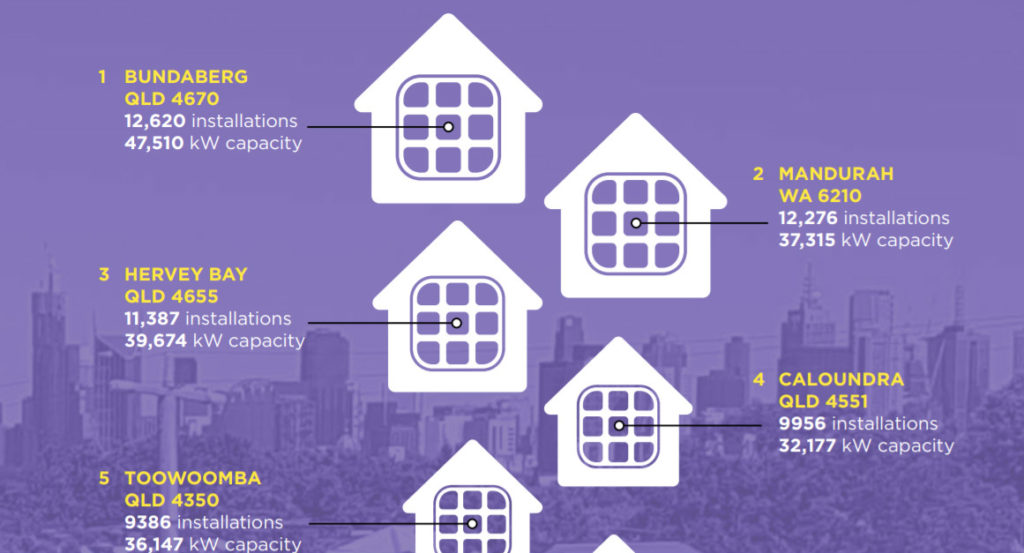
The Bundaberg 4670 postcode area has the highest uptake of solar panel installations in the country, according to the latest Clean Energy Australia report.
Released today, Clean Energy Council chief executive Kane Thornton said this year’s report reads like the Guinness Book of Records for the renewable energy and storage industries.
Bundaberg topped the chart with 12,620 installations and a capacity of 47,500kW.
“The report reflects on an unprecedented period where more rooftop and commercial solar was installed than ever before, and Australia celebrated a milestone of two million solar homes nationally,” Mr Thornton said.
“The real cherry on top is that Australia as a nation produced enough renewable energy in 2018 to power every household in the country.”
The amount of renewable energy capacity financially committed in 2018 increased by 260 per cent on 2017.
“Renewable energy entrenched its position as the lowest-cost type of new energy that can be efficiently built, and costs for new solar and wind power continued to fall – meaning investors saw more bang for every buck,” Mr Thornton said.
“While investment in large-scale renewables doubled from $10 billion in 2017 to $20 billion in 2018, the generating capacity grew by more than 2.5 times over the same period,” Mr Thornton said.
“This extraordinary level of investment created over 13,000 new direct jobs in rural and regional Australia.
“This takes total employment in the industry to over 20,000 direct jobs, with many more indirect jobs created throughout rural and regional Australia.”
Solar power reduces Council energy costs
Budnaberg Regional Council is part of the national success story as it continues to invest in renewable energy to offset rising electricity costs.
Last year Mayor Jack Dempsey said Council’s power bill was expected to rise $643,000 in the current financial year.
“The 11 per cent predicted increase would be much higher if we didn’t already have significant solar generation capability,” he said.
“Council is a big user of electricity through our many venues, facilities and services.
“It’s critical to keep a lid on costs otherwise there would be less money available for the community.”
At Bundaberg Airport, Council has saved an average of 22 per cent a year in terms of peak power consumption since 2015.
“This is nearly 10,000 kilowatt hours, which equates to 7.3 tonnes of CO2 equivalent, 2.5 tonnes of waste or just under 29,000km driven by an average passenger vehicle,” Mayor Dempsey said.
“As well as cost savings, there are positive environmental outcomes.”
Mayor Dempsey said renewable energy was helping to prevent bill shock.
“Council is committed to easing the cost-of-living pressure on ratepayers and that’s why we adopted the lowest-ever rate rise in our 10-year history,” he said.
“We will continue to innovate and explore every possibility to reduce electricity costs for the benefit of our community.”
Towards the end of 2018, Council received a flurry of applications for solar farm developments.
Planning and development portfolio spokesman Cr Ross Sommerfeld said the total value of the projects was estimated at $755 million.
“The farms boast around 1.3 million solar panels and have the capacity to generate 443MW, which is enough to power more than 400,000 homes,” Cr Sommerfeld said.







